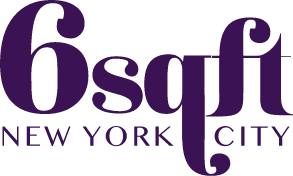 Lincoln Center
Lincoln Center
Once the garbage-strewn setting of the iconic musical "West Side Story," Lincoln Square is one of New York's most successful comeback stories, an early and dramatic example of how New York City neighborhoods are ever evolving. Ringed by glittering residential towers and swanky hotspots such as the Empire Hotel's rooftop bar, Lincoln Square is most closely tied to its namesake -- Lincoln Center -- the 16.3-acre cultural hub that gave birth to the area's renaissance. Today, Lincoln Center is home to the Metropolitan Opera, New York City Ballet and the Julliard School, to name a few.
 Lincoln Center neighborhood (Google Earth)
Lincoln Center neighborhood (Google Earth)
In this article:
The Lincoln Square area runs from Central Park West to the Hudson River, between 59th and 72nd streets. Some of the city's priciest residential real estate lies on its eastern front along the park, with high-profile buildings such as 15 Central Park West and Trump International attaining average sales north of $5,000 per square foot in 2015. One block west, closer to the square, relatively new condo buildings such as The Grand Millennium, 1 Lincoln Square, and 3 Lincoln Center have average sale prices of $2,036 per square foot in 2015.
In recent years, low inventory and record asking prices for apartments nearer to the park have created a surge throughout the once forlorn blocks west of Lincoln Center. The area's two top condo buildings, The Heritage and 220 Riverside Boulevard, had 15 sales this year average $1,640 -- grand bargains compared to their Central Park West counterparts.
Lincoln Square's transformation from slum to high-society epicenter began in 1959, when President Dwight D. Eisenhower broke ground on the Lincoln Center Urban Renewal project. Spanning 17 blocks in the west 60s, the San Juan Hill neighborhood of tenements and light manufacturing was entirely razed, displacing nearly 17,000 residents. Reconstruction began shortly thereafter and the centerpiece of the project, Lincoln Center, opened in 1969. In conjunction with the performing arts center, large-scale public housing complexes such as the Lincoln Towers and the Amsterdam Houses were built on sprawling landscaped superblocks.
During the city's economic crisis in the 70s, urban renewal projects fell out of favor and often proved disastrous for city neighborhoods. Pockets of Lincoln Square's newly cleared blocks lay fallow for decades. Then, in the 1980s, renewed interest in Manhattan residential real estate prompted developers to recognize the tremendous potential for the low-slung neighborhood. The Brodsky Organization opened some of the area's first luxury rentals that include the Concerto, South Park Tower and West End Towers. Also in the late 1980s, Lincoln Square welcomed its first condos, Tower 67 and The Alfred.
For the blocks west of Lincoln Center, the biggest shift occurred with construction of the Riverside South development along the Hudson River. In the early 90s, Donald Trump purchased the derelict 77-acre Penn Central rail yards site, with the goal of building a 16.5 million-square-foot development, dubbed Television City. The master plan was later scaled down to 5,900 apartments arranged in 16 buildings evoking the Central Park West skyline. Trump went on to build seven buildings along Riverside South before selling the remainder of the site to the Carlyle Group and Extell Development.
 The Hypar Lawn looking west, image by Iwan Baan
The Hypar Lawn looking west, image by Iwan Baan
The Lincoln Square transformation hit its stride near the turn of the millennium, solidifying its position as a highly sought-after neighborhood. The completion of several residential towers by the developer Millennium Partners brought a retail renaissance along the neighborhood's Broadway spine, with current retailers that include the Apple Store, Century21, Bed Bath & Beyond, and an IMAX movie theater. In 2006, Lincoln Center underwent a $ 1.4 billion dollar renovation spearheaded by Diller Scofidio + Renfro. The re-imagined spaces brought a fresher appearance and modernized amenities to the cultural hub.
Once desolate blocks between Amsterdam Avenue and West End Avenue are now home to shimmering new condo towers such as the Element, 10 West End, and the Adagio.
At present, a new wave of development is in the process of adding thousands of apartments in buildings designed to mend the urban renewal projects of the 60s into the overall fabric of the Upper West Side.
In 2015, Extell Development's One Riverside Park condominium opened, becoming the last of the Riverside South towers. There were 169 sales in the building in that first year of sale, with an average price per foot of $1,756.
New projects include the two-block Riverside Center master plan which features five new residential towers (three in Waterline Square, One West End, and 21 West End) and a new school, and Fordham University's redevelopment of its superblock with new residential and academic buildings.
 Waterline Square (Renderings by Noe & Associates)
Waterline Square (Renderings by Noe & Associates)














 6sqft delivers the latest on real estate, architecture, and design, straight from New York City.
6sqft delivers the latest on real estate, architecture, and design, straight from New York City.
